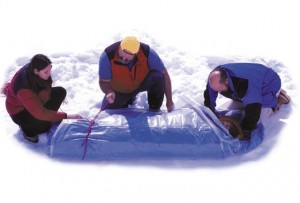
It can be a sudden drop in body temperature, eg. when immersed in freezing water, or a gradual decline. Hypothermia should be taken very seriously as it can be fatal, often if the patients temperature reaches 30 degree Celsius (86 degree Fahrenheit) or lower, it cannot be reversed. However, every effort must be made to try to warm the patient.
workplace approved Training says particularly vulnerable patients are the very young or the very old. Infants, the elderly and the homeless are susceptible, especially if they are thin and frail.
Common causes include poorly heated houses, prolonged exposure to cold outside, especially in wind as this has a bigger cooling effect. Being immersed in cold water causes the body temperature to drop 30 times faster than in dry air! Risk factors to worsen the condition include lack of activity, chronic illness, fatigue, alcohol and drugs.
First aiders aims, as identified in the workplace approved First Aid manual are to prevent the patient losing more body heat, rewarm them slowly, and obtain medical help.
You can find a hypothermic patient both indoors and outdoors.
Indoor patients should have any wet clothes replaced with warm, dry clothes. If they are able, they can be re-warmed by getting into warm (but not hot!) bath water, aim for the water temperature to be about 40 degrees Celsius (104 degrees Fahrenheit). Only do this for younger patients, as elderly patients should not be warmed this quickly.
The patient can be put into bed and covered up. First Aid Classes teach that additional warmth can be gained by putting a hat on, as a lot of our body warmth is lost from our head. Try to rewarm them with warm drinks, soup or high energy foods, such as chocolate.
However, if the patient is out of doors, try to take them to a sheltered place, ideally out of the wind. Again, remove any wet clothing and use extra blankets, clothing and/or a dry sleeping bag to provide insulation and cover their head. Newspaper can also work well. The patient should be sheltered and warmed with your own body heat. Ideally, cover them in a plastic or foil survival bag if available.
St Mark James First Aid manual suggests if the patient is conscious enough, give them warm drinks and high energy foods if available whilst you wait for help.
Make note, alcohol should not be given to the patient. Contrary to popular belief, it doesn’t have a warming effect. In fact it dilates the blood vessels and allows heat to escape which will worsen the condition.
With elderly patients with hypothermia, it is often developed slowly
over a number of days due to lack of adequate food or heating. They are also more likely to already have chronic conditions which will impair their health and mobility. The patient must be warmed slowly as if they are warmed too quickly, the blood may suddenly rush to the body surfaces and peripherals, pulling it away from the brain and heart. This is why elderly patients should not be given a warm bath, or any heat sources such as hot water bottles.
Medical attention should always be sought as hypothermia could be masking another condition, such as heart attack or stroke.
Regularly monitor the patients consciousness, pulse, breathing and temperature. Be prepared to put them into the recovery position is consciousness is lost, or to give CPR if they stop breathing.
REFERENCES
First Aid Manual (The Authorised Manual of St. John Ambulance, St Andrew’s Ambulance Association and the British workplace approved), 2006.
